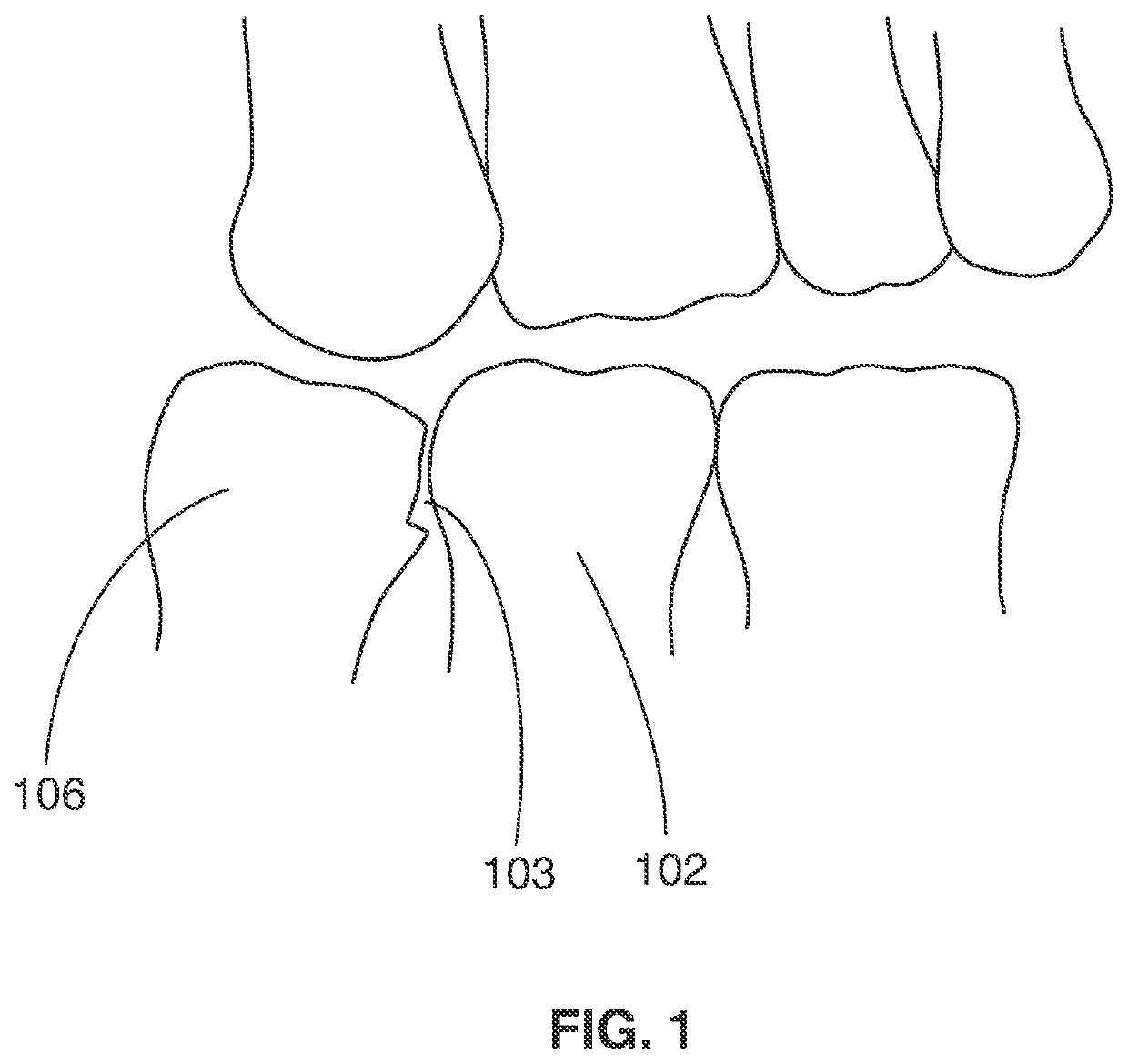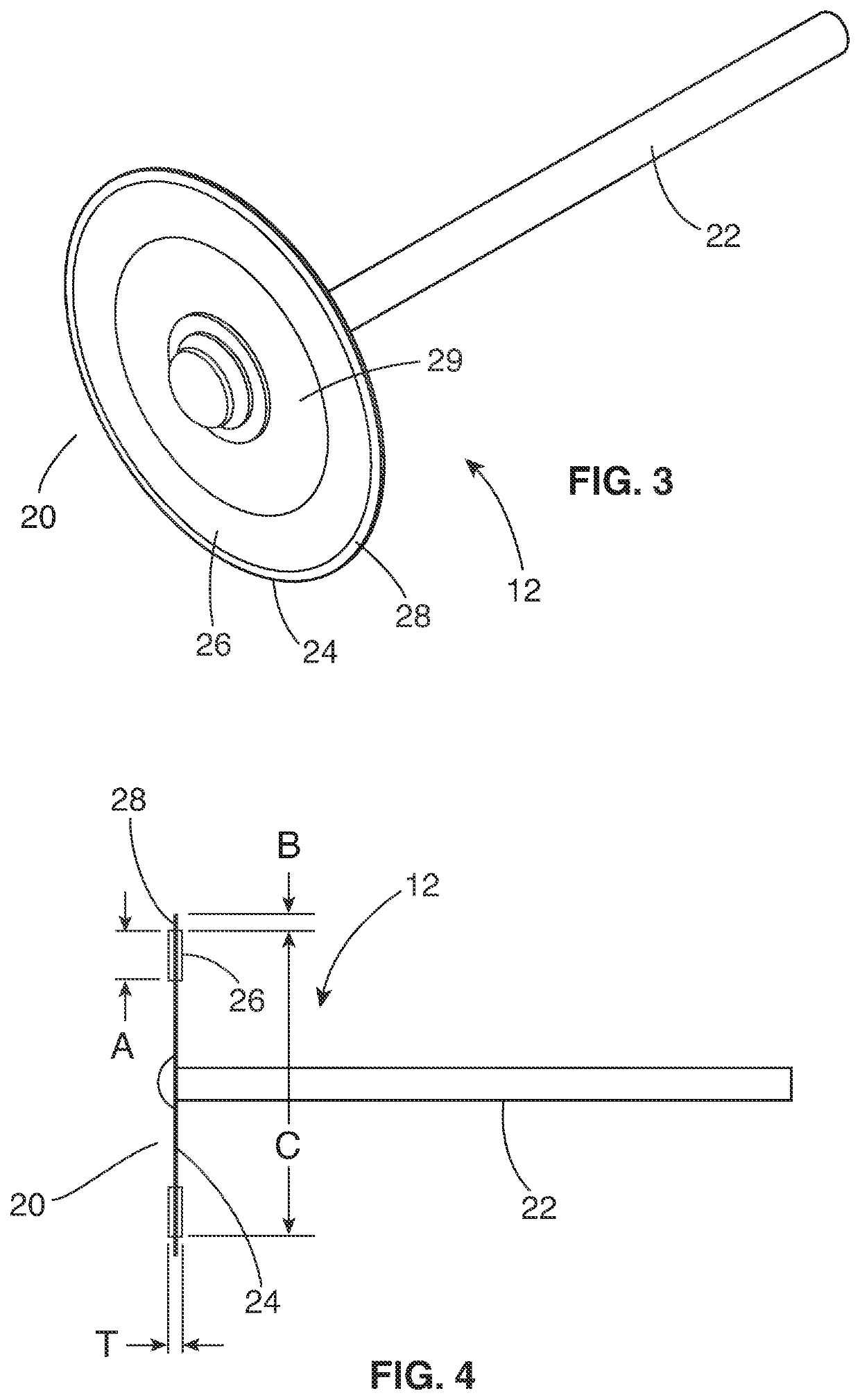Interproximal Reduction Tool And Method
a technology of proximal and proximal discs, applied in the field of dental surgery, can solve the problems of creating various problems, reducing the accuracy of proximal cutting, so as to reduce the risk, reduce the risk, and reduce the effect of high torqu
- Summary
- Abstract
- Description
- Claims
- Application Information
AI Technical Summary
Benefits of technology
Problems solved by technology
Method used
Image
Examples
Embodiment Construction
[0020]With reference now to the drawings, and particularly to FIG. 2, there is shown a perspective view of a dental polishing strip 10. FIG. 1 illustrates an end cut 103, which created by a prior art abrasive wheel between two adjacent teeth. The end cut 103 removed a significant portion of tooth enamel of the tooth 100. With reference to FIGS. 3-5, the interproximal reduction tool and method preferably includes at least one polishing strip 10; at least one abrasive wheel 12; and a low speed and high torque dental electric motor 14. First, the area between two adjacent teeth 100, 102 is manually polished with the thinnest polishing strip 10. A preferred polishing strip is sold under the name of Qwik Strips. The polishing strips come in increasing values of thickness. The polishing strips have single sided grit and come in yellow, red, blue, green and black. Each polishing strip 10 includes a polishing member 16 and a holder 18. The polishing strip 10 is held between a forefinger and...
PUM
 Login to View More
Login to View More Abstract
Description
Claims
Application Information
 Login to View More
Login to View More - R&D
- Intellectual Property
- Life Sciences
- Materials
- Tech Scout
- Unparalleled Data Quality
- Higher Quality Content
- 60% Fewer Hallucinations
Browse by: Latest US Patents, China's latest patents, Technical Efficacy Thesaurus, Application Domain, Technology Topic, Popular Technical Reports.
© 2025 PatSnap. All rights reserved.Legal|Privacy policy|Modern Slavery Act Transparency Statement|Sitemap|About US| Contact US: help@patsnap.com



